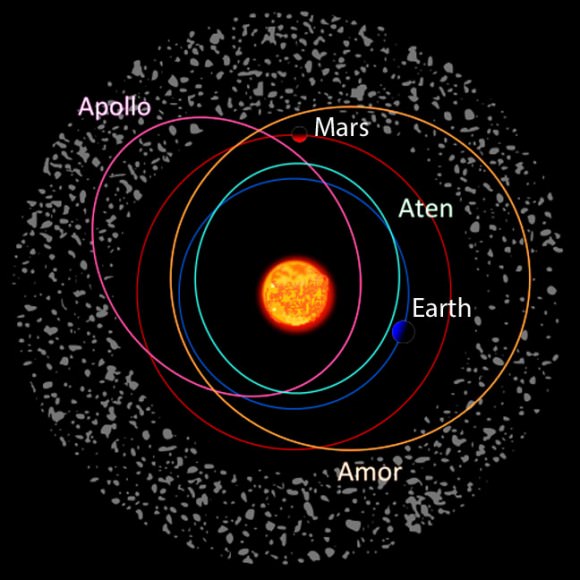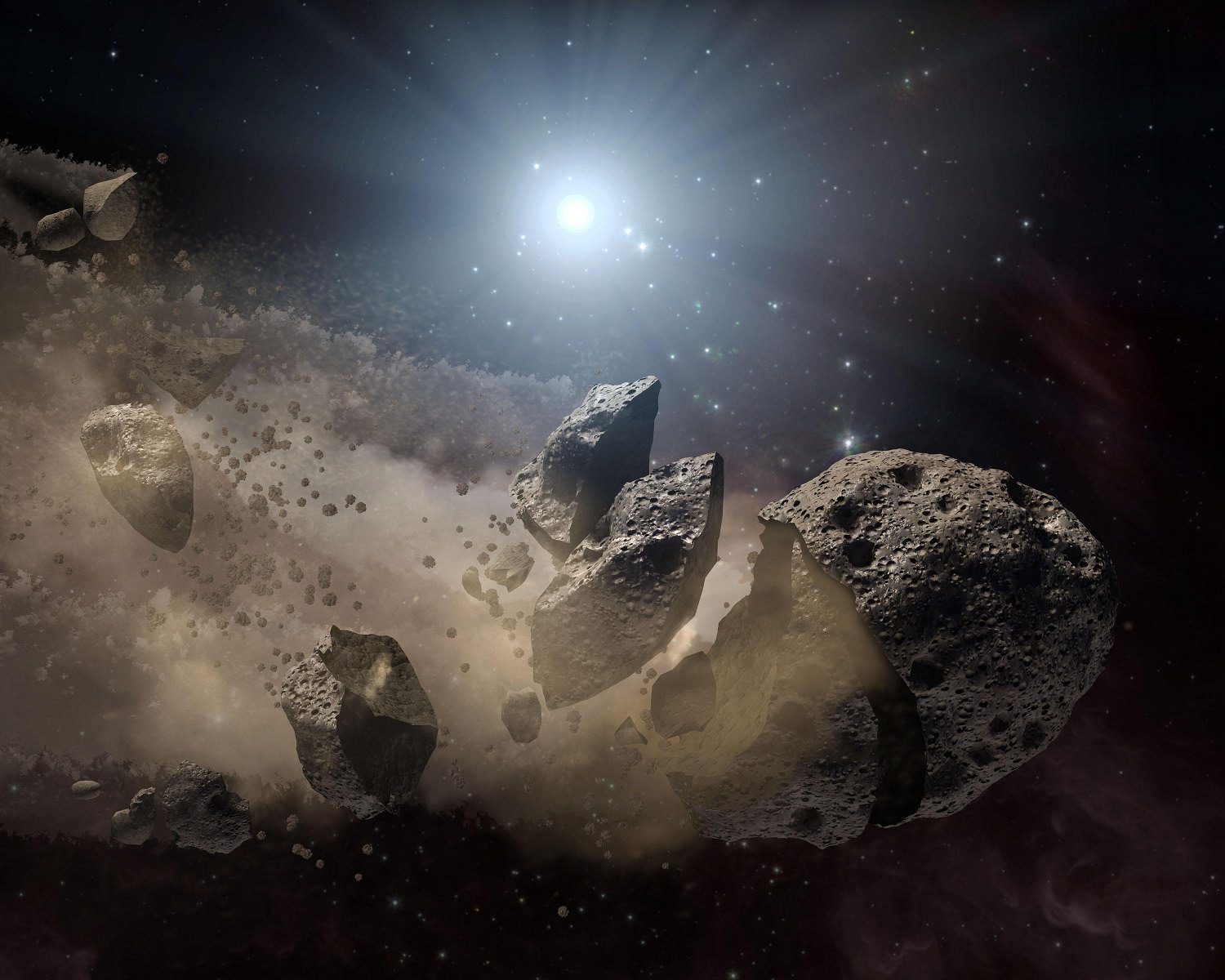The early Solar System was a shooting gallery. Smaller-body collisions happened far more frequently than we see it today, pockmarking the Moon and Mercury. On a larger scale, simulation show the Earth came close to blowing apart when a Mars-sized object crashed into us long ago.
So we’d be forgiven for thinking that it’s asteroid collisions that cause these tiny bodies to break up, given their numbers and the history of our neighborhood. But it turns out, a new study says, that the larger asteroids likely have another way of coming apart.
“For asteroids about 100 meters [328 feet] in diameter collisions are not the primarily cause of break ups – rapid rotation is,” the Smithsonian Astrophysical Observatory stated.
“Moreover, because the rate of collisions depends on the numbers and sizes of objects but rotation does not, their results are in strong disagreement with previous models of collisionally-produced small asteroids.”

It turns out that rotation has a strong effect on such a small body. First, the asteroid is emitting stuff that can produce a spin — water evaporating, or its surface expanding as heat from the Sun strikes it. Also, the Sun’s pressure on the asteroid creates a rotation. Between these different effects, at the right (or wrong) moment it can cause a catastrophic breakup.
As a simulation (coupled with observations from the Pan-STARRS telescope), the research is not done with complete certainty. But the model shows 90% confidence that asteroids in the so-called “main belt” (between Mars and Jupiter”) experience disruptions in this way, at least once per year.
The research was published in the journal Icarus and is also available in preprint version on Arxiv. It was led by Larry Denneau at the University of Hawaii.


Not mentioned in story, but I assume this is a precursor speculation about how dusty young stars come to be. (?)
I don’t see how anything of the spin-breakup remains would alter its stellar orbit, causing an extensive dusty stellar space later on.
– Schoemaker-Levy 9 is an example of a stress breakup. (By Jupiter)
– Comet 9P/Tempel shows an impact result.
– P2010 A2 shows in impact result.
I imagine that an overspin breakup would look like Schoemaker-Levy 9, but more peaceful, as things stay closer together.
Rapid rotation is likely the cause of most main-belt comet (active asteroid) detections. Rubble piles will not take well to spinning too fast.
There are actualy examples of what (might) happens with mass redestribution with an overspin.
Heavy material moves outward, loose rubble moves to the center.
Example: 67P/Churyumov-Gerasimenko (ESA’s Rosetta mission)
Example: 25143 Itokawa (Japan’s Hayabusa mission)
Another example: Not enough dusty Systems. They are the odd ones out. not the rule.
I would think that with two small bodies, the odds of a collision would be extremely remote. Even in the asteroid belt, space is mostly empty.
I agree with you Hunter.
IMO: A Jupiter sized object that breaks small bodies apart like Schoemaker-Levy 9 would probably be a more likely candidate for a domino effect of Dust.
How about a passing tornado shaped mag. wavefront spinning up the in-situ mag. field? Spin yer motor mister?
I’m guessing that a new asteroid would have to grow quickly past a certain point where gravity became strong enough to counter centrifugal force.or be torn apart as the sun’s affects accumulated? A ‘Grow Big or Die’ situation. Interesting.